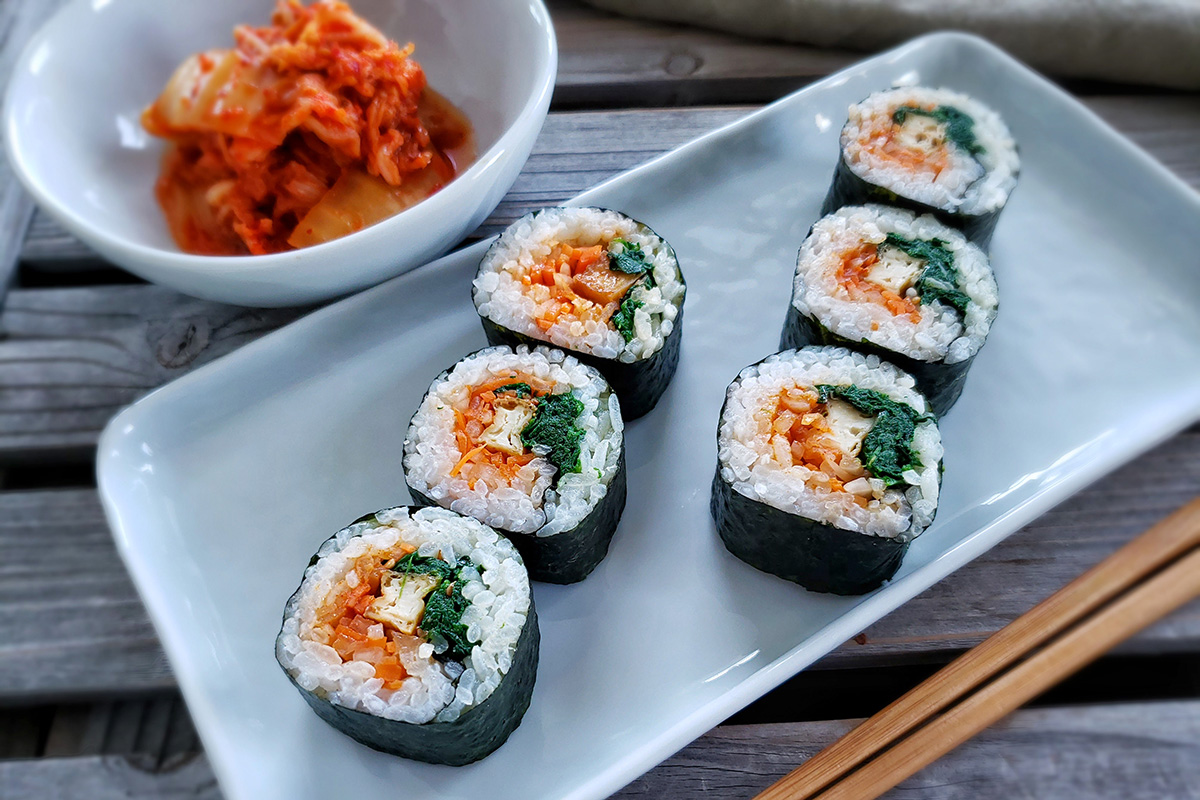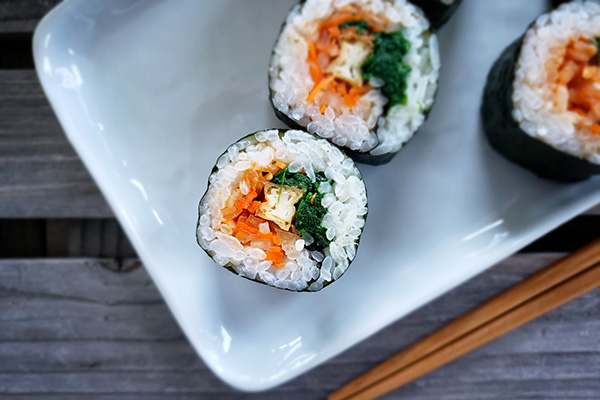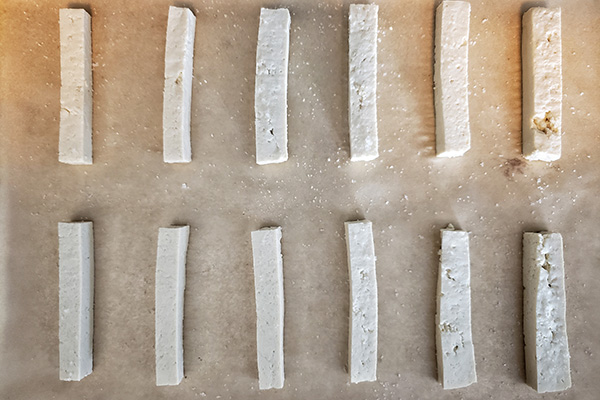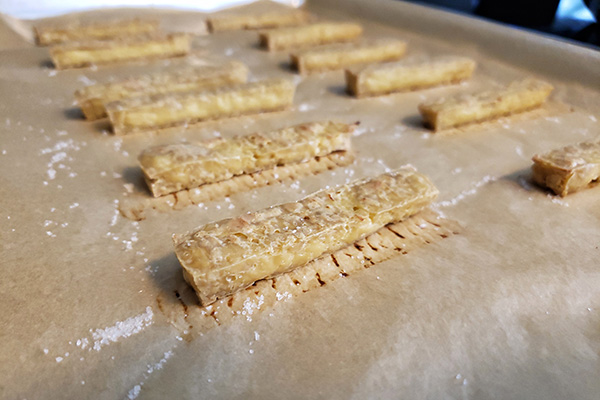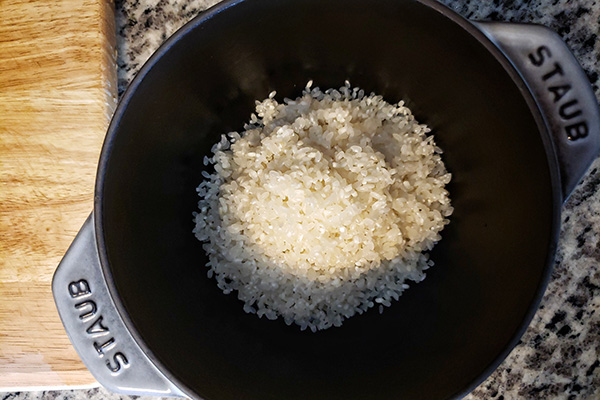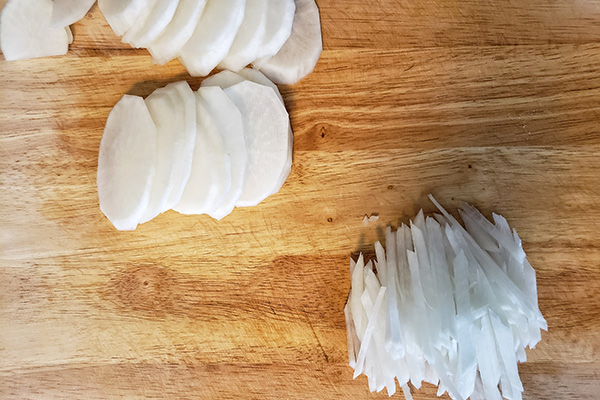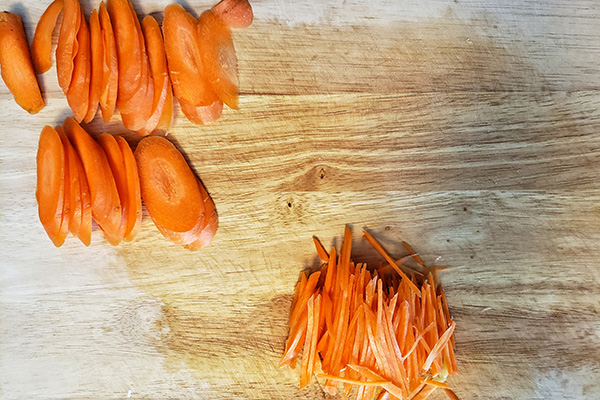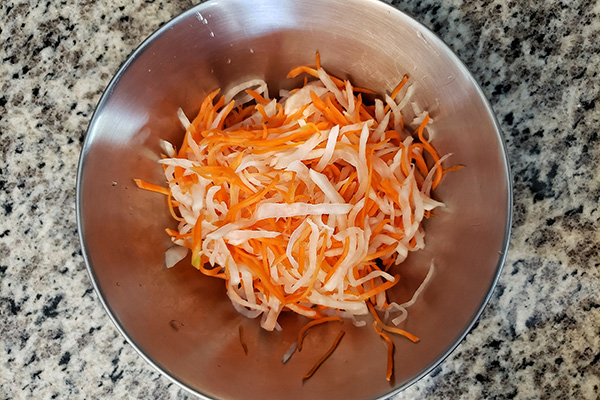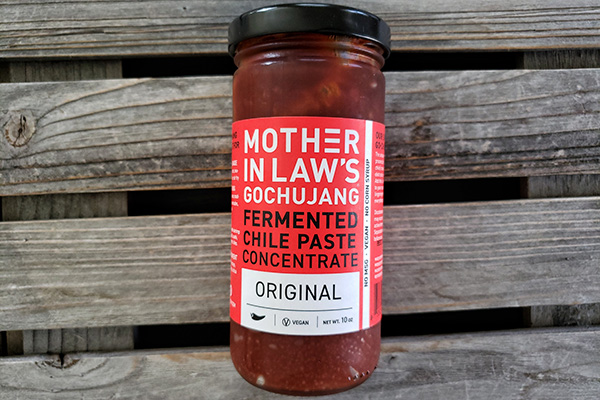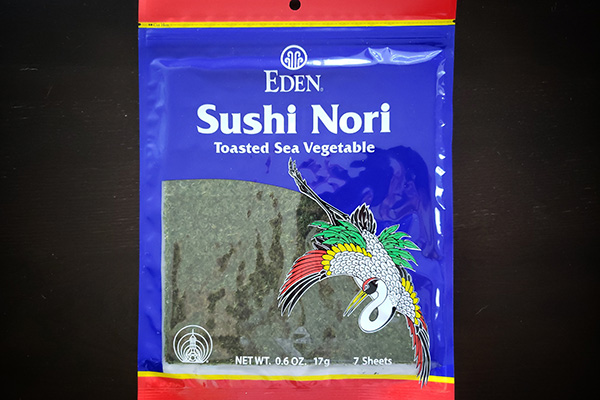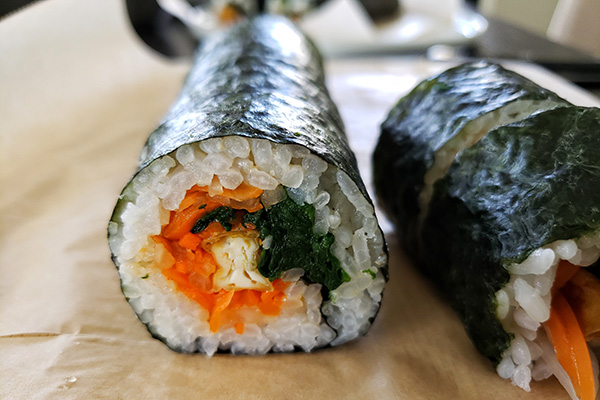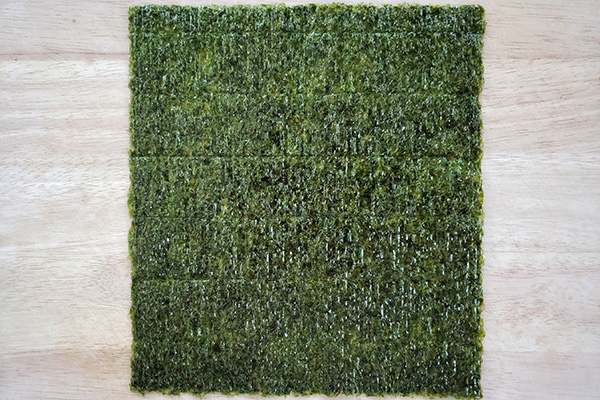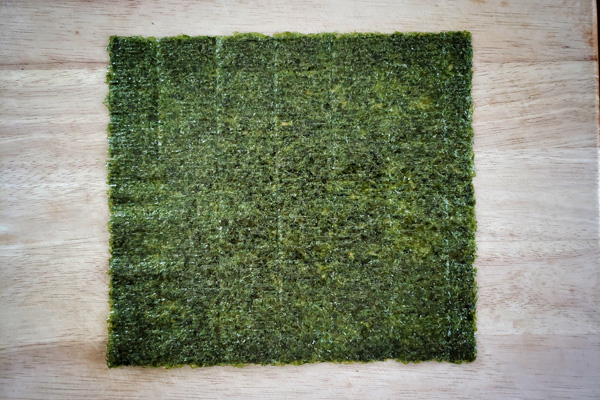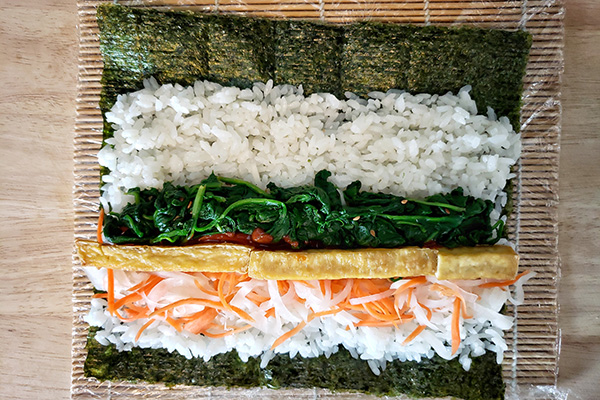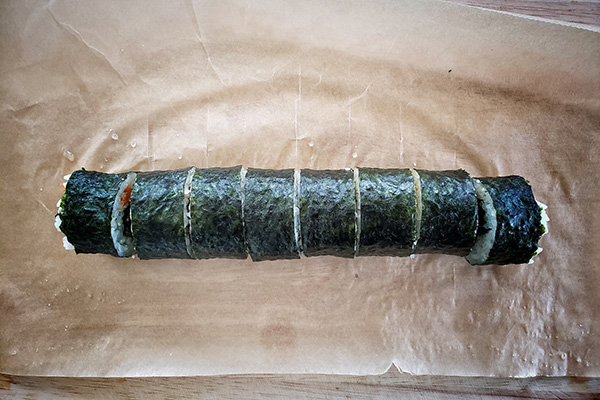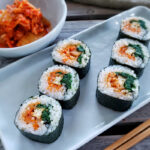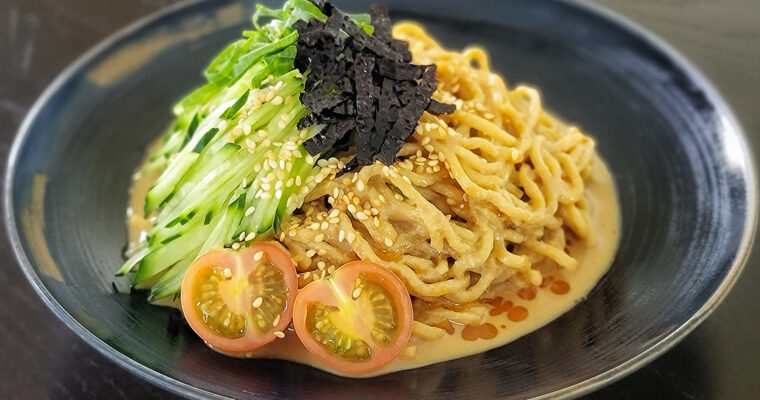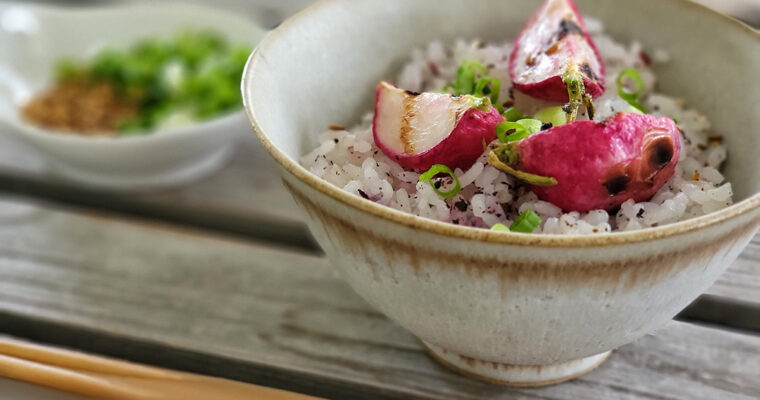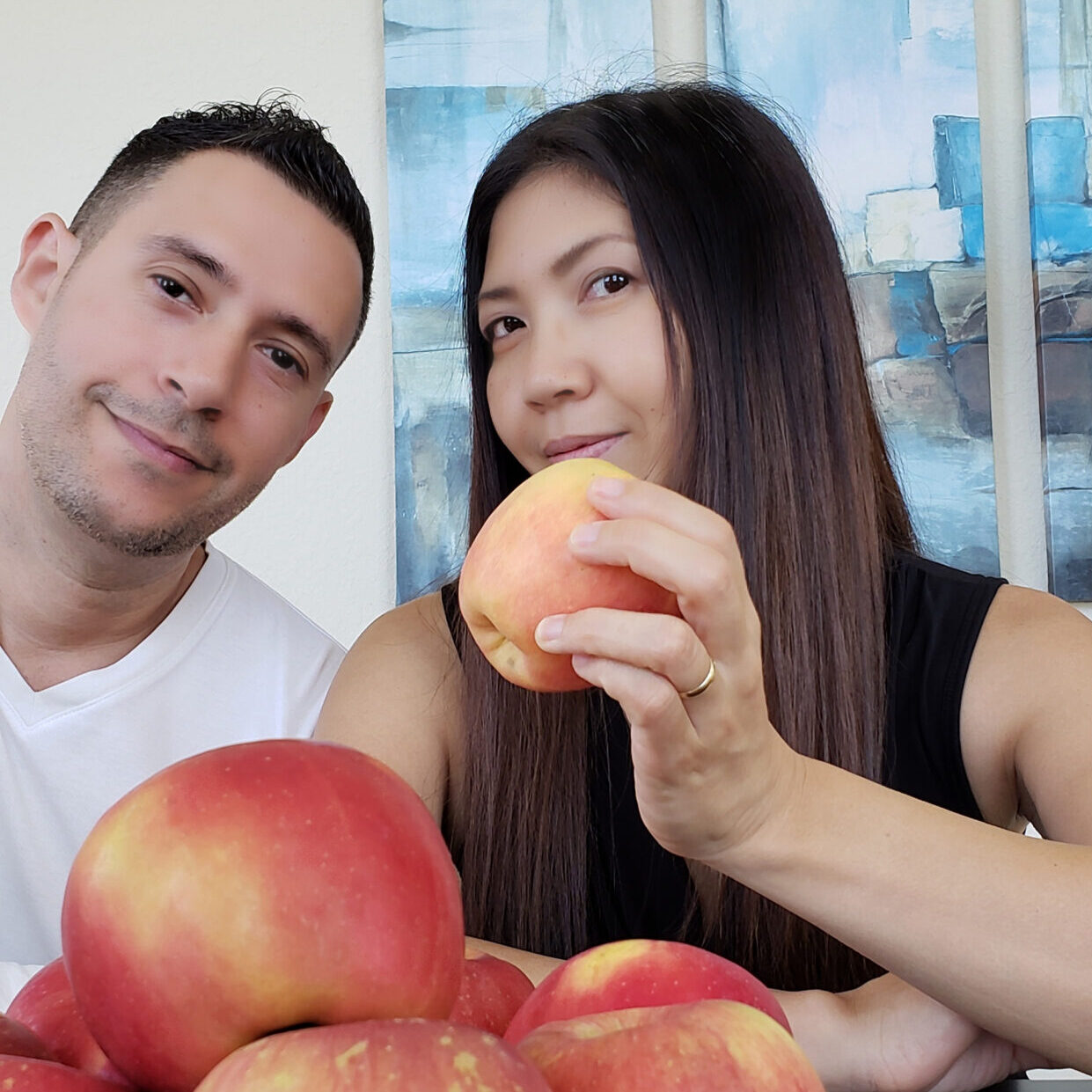Last Updated on March 4, 2021
[キンパ:韓国海苔巻き]
Kimbap is Korean seaweed rice roll and this is actually one of my favorite things to eat! My recipe is 100% vegan and it’s really fun to make right in your kitchen. I make this very often but never had an actual recipe until now. Once you make it, it’ll definitely be one of your favorites as well!
What’s Kimbap?
The name says it all, kimbap is kim or gim (seaweed) + bap (cooked rice.) It’s a Korean dish that has seasoned cooked rice, seasoned veggies, pickles, and with some kind of protein all wrapped in a sheet of seaweed. I’m not Korean so this is my interpretation of kimbap but I remember eating some back home in Japan. There was a mom-and-pop Korean grocery store in my town I used to live and my mom would stop by to buy some Korean seaweed, kimchi and of course kimbap. While I can’t really recall what was exactly in their kimbap, I clearly remember it was super delicious.
My interpretation of vegan kimbap tastes just like how I used to enjoy the one from the store in my hometown.
Sushi vs Kimbap
Many people still have a misconception of Japanese sushi (roll) and Korean kimbap. I often see kimbap as Korean “sushi roll” but that is incorrect. Why?
When I say sushi roll, I’m referring to the specific kind of sushi roll called Futomaki [太巻き] which is a large and thick sushi roll that looks just like kimbap. While they look alike, one of the major differences is that the rice is seasoned completely different. The rice for sushi (called sumeshi) is seasoned with vinegar, salt and sugar. On the other hand, the one for kimbap is seasoned with toasted sesame oil and salt. In other words, if the rice is not seasoned with vinegar, it is NOT sushi.
The fillings could be similar but again, they are quite different and seasoned differently. To give you an example, they both typically has some cooked spinach in it. For sushi roll or futomaki, the spinach is simply boiled with no seasonings on the other hand the one in kimbap is seasoned. Another common ingredient for both rolls is cooked eggs; for sushi roll, it’s rather sweet and savory while the one for kimbap is just savory.
So, those are some of the major differences between the two similar looking rolls. As long as you follow the general ideas of what goes into each one, you will no longer be confused and the end result, the taste, is 100% different!
They both have one thing in common. It should be eaten when it’s freshly made at a room temperature. You could make extra and keep in fridge but you need to do some tricks so they will still be edible the next day. I’ll talk about that more later on in the The Tips section.
Let’s get cooking!
The Ingredients
Here is the list of the ingredients for my mouthwatering vegan kimbap! There are some different components to assemble a roll so I listed up ingredients by each component.
Baked Tofu
- Extra Firm Tofu
- Salt
Rice
- Uncooked Short Grain White Rice (starchy kind)
- Water
- Salt
- Toasted Sesame Oil
Daikon & Carrot Filling
- Carrot
- Daikon Radish
- Salt
- Sugar
Spinach Filling
- Baby Spinach
- Water
- Toasted Sesame Oil
- Toasted Sesame Seeds
- Soy Sauce
The Rest
- Gochujang
- Water
- Sushi Nori Sheets
You’ll also need a sushi rolling mat to make this recipe!
The Tips and Recipe Notes
I’ll break down some key points to make your cooking process easier!
Baked Tofu
To replace the traditional egg component, I like to use tofu. I use drained extra firm tofu and cut it in strips, then season and bake them in the oven. I used to pan-fry tofu to get the crispy texture but lately found that baking method is much easier and less cleanup required. It comes out perfectly every time! I season them with salt only but you can also use black or white pepper and garlic powder if you like.
Rice
I find Korean rice and Japanese rice to be very similar. Since the Japanese one is what I always have in my pantry, that’s what I used. Make sure to use the sticky (starchy) short grain rice like them. Other type of rice like long grain, basmati, jasmine rice etc. just won’t do the proper work and won’t taste the same! I use white rice for the taste (there’s nothing like eating white rice) but you could also make one with brown rice.
I made mine using my favorite cast iron pot from Staub. This pot is made specifically for making rice. You can also use a rice cooker to do the same job.
As mentioned, the seasoning for the rice is just salt and toasted sesame oil. You won’t need anything else because the fillings will have own seasonings as well. Make sure not to over salt it for the same reason.
Daikon & Carrot Filling
This is a quick pickle filling. The combo of daikon and carrot is my go-to for making any pickles. Alternatively, you use, add or replace with cucumber. I personally prefer cutting them thinly or julienned. That way, they season quicker and better, and the texture is somewhat still crunchy but tender at the same time. If you prefer crunchier texture, cut them thicker but it will not pickle in the same way. Just saying.
I used salt and sugar to pickle. You know how salt and sugar draw out so much moisture from veggies. So, it’s very important that after pickling with salt and sugar, you want to squeeze the liquid out otherwise you’ll end up with very soggy kimbap! Don’t worry, after squeezing, you can still taste the seasonings.
Spinach Filling
When I make an Korean rice dish, I usually incorporate cooked spinach like this one. I’ve made similar flavor namul in the past but the only difference for this one is I didn’t use garlic (raw.) In my opinion, the use of raw garlic in namul makes it very authentically Korean. This time I just skipped it.
I used baby spinach for this but mature spinach also works. What’s the difference? The mature spinach has better texture and more flavor than the tender baby spinach.
Just like the pickles above, you don’t want to have wet spinach filling that will make the kimbap soggy. Here is what I do.
- Water sauté the spinach
- Let it cool down and squeeze them
- Then season them
With this way, you won’t end up with unwanted spinach juice and the seasonings will still be there after squeezing. If you’re using raw garlic use it when you season the spinach with other ingredients (after squeegeeing.) A little bit goes a long way!
Gochujang
I love the spiciness and sweetness of gochujang. The one I use is from Mother-in-Law’s. Just like any gochujang, it’s quite thick so I thin it a little with a tiny amount of water so it spreads out easily. Gochujang is fermented so it has such complexity in taste. Every gochujang product has a different level of spiciness so adjust the amount of how much to use accordingly to your preference.
Nori Sheet
I use the same nori (seaweed) sheet for making sushi. My favorite one is from Eden Foods. It’s a product of Japan but works perfectly for kimbap.
What I like about this particular nori sheet is it doesn’t get chewy. Lower quality seaweed always has that super chewy texture when it’s surrounded with rice. The moisture from the rice makes seaweed a bit wet which is completely normal but it shouldn’t make it chewy. Next time, try to pay attention to the texture of the sushi nori. If you can’t break the seaweed with your tooth or it all comes off in one strip and dangling from your mouth, it’s a low quality one so try to find something better if possible.
How to Roll
Have you ended up with sushi roll or kimbap with fillings all pushed to the side, not centered? Or the rice fillings coming out from both ends or overflowing at the edge where you need to seal the roll? To avoid all those bad looking rolls, you need to strategically place each ingredients in certain ways. Here is the picture of how I place each ingredient.
[Direction of Nori Sheet]
Did you know that sushi nori is not completely square? Also, the nori has front/back side and each has a different surface texture? Not only that, one side is longer than the other. There are reasons for those factors.
- No matter what, you always want to put the rough surface up. This way, after rolling the outer surface will be beautiful and smooth.
- If you want to make a thicker roll, place it in the way the longer sides are vertical. In other words the grid on the back of nori sheet will be horizontal.
- If you want to make a thinner roll, place the opposite way: the longer sides are horizontal and the grid is vertical.
I used the latter option (#3: horizontal longer sides and vertical grid) because I didn’t put too much fillings in it also, I like to pop a whole bite-size slice in my mouth. If you use more variety of fillings or increase the amount of each component, you definitely want to choose the other way.
[How to Place Each Component]
Once you have the nori sheet placed in your preferred way, it’s time to place each component on it certain ways. This is how I do. You can also see the details on how I placed them in the picture.
- Spread the rice on nori. Make sure to leave 1/4-inch (0.5 cm) at the bottom and 3/4-inch (2 cm) at the top empty.
- Spread out the daikon & carrot 1/2-inch (1 cm) above the bottom end of the rice
- Place the spinach above them
- Spread out the gochujang mixture between the daikon & carrot mixture and the spinach
- Then place the strips of tofu (trim to match the length if needed.)
[How to Roll/Slice]
Roll it once 1/3 of the way and press it firmly, then roll again another 1/3 way and press it firmly, the last roll is to seal the end. Slice the roll into 8 pieces. If you’re having a hard time slicing a roll with a clean cut, wipe off the remains from the knife with a damp cloth on every slice. Also, slice them by moving the knife back-and-forth motion rather than vertical motion only. This will prevent the roll from smushing.
How to Store Leftovers
Although you want to eat while they are freshly made, it’s quite filling and you may end up with leftover rolls. Here is what you can do to save the leftovers so you can avoid with hardened rice.
- Slice the leftovers into 6 pieces and keep them together.
- Use plastic wrap (I know it’s not the best material but it’s a must in this case) to completely wrap them.
- Place the wrapped rolls in an airtight container and store in the fridge until the next day. I wouldn’t recommend any longer.
- Take out the rolls out of the fridge about 1 hour before eating (or longer up to a 2 hours) and leave them at a room temperature. Keep the wrap on and avoid hot places or direct sunlight for obvious reasons.
- Unwrap and eat!
It just can’t beat the texture and taste of the fresh rolls but if you follow this method, it’s 100% edible!
Feeling Inspired?
Check out other Korean inspired vegan recipes!
Korean Style Savory Potato Pancakes
Broccoli Stalk Namul (Korean Style Side Dish)
Kimbap (Korean Seaweed Rice Rolls)
Ingredients
Baked Tofu *
- 7 oz extra firm tofu (1/2 block) cut into 1/3-inch (1.5 cm) width thin strips
- 1/4 tsp salt
Rice
- 1 1/2 cups uncooked short grain white rice starchy kind
- 14 oz water (heaping 1 1/2 cups)
- 3/4 - 1 tsp salt
- 1 tsp toasted sesame oil
Daikon & Carrot Filling
- 3.5 oz carrot julienned
- 8 oz daikon radish peeled and julienned
- 3/4 tsp salt
- 3/4 tsp sugar
Spinach Filling *
- 10 oz baby spinach
- 1/2 -1 tbsp water
- 1/2 tsp toasted sesame oil
- 1/2 tsp toasted sesame seeds
- A few dashes soy sauce
The Rest
- 1 tbsp gochujang
- 1 tsp water
- 4 sushi nori sheets
Instructions
- Preheat the oven at 400 °F (200 °C.) On a parchment paper lined baking sheet, place the tofu strips in a single layer then season with salt. Bake in the oven for 25-30 minutes. Flip them and bake for another 10-15 minutes. Take them out of the oven and set aside.
- While baking tofu, start preparing rice. Prepare rice. Place rice in a large bowl. Pour water to cover the rice. Wash it with your hand moving in circular motion then quickly discard the water. Repeat the process for 5 to 6 times until water becomes clear. Drain well. Alternative way: Place rice in a fine mesh colander. Rinse under running water. Use a hand moving in circular motion to rinse thoroughly until water becomes clear. Drain well.
- Transfer the rice to preferably a cast iron pot with a heavy lid or something similar. Pour water and make the rice leveled. cover with the lid. Cook over slightly higher than medium heat. In about 10-15 minutes, it starts almost boiling (you will see the bubbles.) At this point, open the lid and use a rice paddle to give a quick stir from the bottom. Make the rice leveled again then cover with the lid. Reduce the heat to low and continue to simmer for 10 minutes. After the 10 minutes, turn off the heat. Keep the lid on and let it stand for 10 minutes.
- Transfer the rice to a large prep bowl. Season with salt and toasted sesame oil. Fluff in folding/cutting motion. Cover with a towel, plate or plastic wrap (crack open for the moisture to escape a little) to keep it warm and set aside.
- While the rice is cooking, start preparing all the fillings. To prepare the daikon & carrot filling, combine them in a prep bowl. Season with salt and sugar. Let it stand for 15-20 minutes. Squeeze the water out and transfer to another bowl. set aside.
- Next, prepare the spinach filling. Heat up a frying pan at medium high heat. Add baby spinach and water. Cook until wilted down in volume. Transfer to a plate and let it cool down for 10-15 minutes. Once they are cool enough to handle, squeeze water. Then transfer to another bowl. Separate the leaves and season with toasted sesame oil, toasted sesame seeds and a few dashes of soy sauce. Mix well and set aside.
- In a small bowl, add gochujang and water. Mix well and set aside.
- Have all the ingredients ready in one place and start assembling. Place a nori sheet on a sushi rolling mat. Use a quarter of each ingredient to make one roll. Take the rice and spread onto the nori sheet. Make sure to leave 1/4-inch (0.5 cm) at the bottom and 3/4-inch (2 cm) at the top empty.
- Next, spread out the daikon & carrot 1/2-inch (1 cm) above the bottom end of the rice, spread out the spinach above them, spread out the gochujang mixture between the daikon & carrot mixture and the spinach, then place the strips of tofu (trim to match the length if needed.) Start rolling from the bottom part.
- Roll it once 1/3 of the way and press it firmly, then roll again another 1/3 way and press it firmly, the last roll is to seal the end. Slice the roll into 8 pieces.
- Serve immediately at room temperature.
Notes
- For the veggie fillings, make sure to squeeze the liquid enough so that they aren’t wet otherwise the roll will be soggy and fall apart.
- Alternative to the baked tofu, you can pan-fry the tofu.
- You can also use garlic powder for the baked tofu and garlic paste for the spinach.
- While freshly made one taste at its best, you can wrap the leftovers in a plastic wrap, and transfer to an airtight container and store in the fridge until next day.
